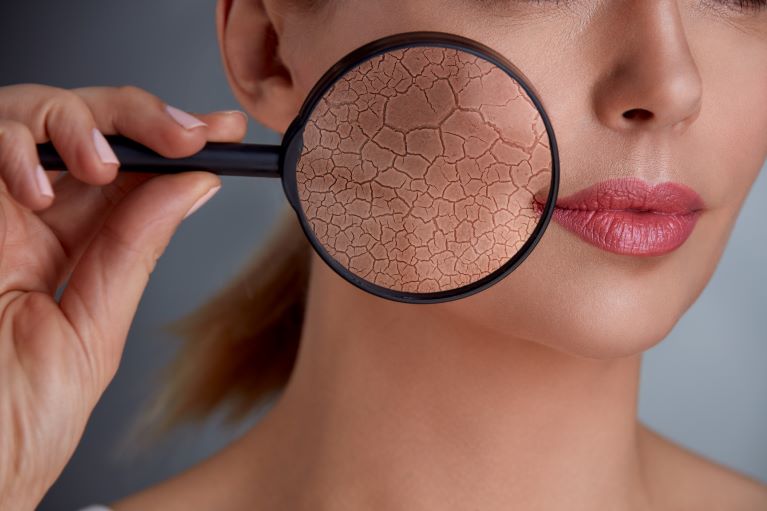Why is the Dry Skin on My Face So Uncomfortable?

If you have excessive dry skin on your face, then you are probably wondering why it is so uncomfortable . It might be itchy, flaky, and sometimes sore, which is no fun for anyone. But what exactly causes dry skin and makes it feel uncomfortable?
There are actually a few different things that can cause your skin to become dry. For one, if you live in a climate that is particularly dry or sunny, that can lead to your skin drying out. In addition, if you do not drink enough water or if you do not cleanse and moisturise your skin properly and regularly, that can also contribute to dryness.
But one of the most common causes of dry skin is actually something that you may not even realise, and this is using a face cleansing product that is too harsh for skin with strong detergents. This is because many facial cleansers on the market today are actually quite harsh, and they can strip our skin of its natural oils, leading to dryness. This is why we always recommend using high-quality products like Nakin’s Natural Skincare which helps skin in many ways and without contributing to dryness. Instead, it helps to correct dry skin and heal the skin barrier for long-term hydration and comfort.
The effects of dry skin on the different layers of the skin can vary depending on the severity of the condition. In mild cases, dry skin may only cause a slight irritation or itchiness. However, in more severe cases, dry skin can lead to cracks, fissures, and even bleeding.
Dry skin can affect all layers of the skin, but is most commonly seen in the epidermis, or outermost layer. This is because the epidermis contains less oil than the other layers of the skin, making it more susceptible to drying out. When the epidermis becomes too dry, it can crack and flake off, leaving the underlying skin vulnerable.
The dermis, or middle layer of the skin, can also be affected by dry skin. This layer contains blood vessels, nerves, and other structures that can be damaged by dryness. In addition, the dermis is home to the sebaceous glands, which produce oil that helps keep the skin moisturised. When the dermis becomes too dry, these glands may become less active, leading to even more dryness.
The subcutaneous layer, or innermost layer of the skin, is not usually affected by dry skin unless the condition is severe. This layer contains fat and connective tissue and is not as susceptible to drying out like the other layers.
Dry skin can be a nuisance, but it is not usually a serious condition. However, if dry skin leads to cracks, fissures, or bleeding, it is important to see a doctor or other medical professional for treatment. In most cases, simple remedies like our Nakin Revitalising Face Oil is all that is needed to treat dry skin on the face. However, in more severe cases, prescription medications may be necessary.
As well as correcting dry skin with the right hydrating face products and not using harsh cleansers, we should also drink enough water every day. This will help to keep our skin hydrated from the inside out. Skincare wise, using high performing natural cleansers, treatments and moisturisers will help your skin to thrive without the dryness and irritation. Instead, the moisture building and retaining ingredients help to lock in moisture and keep your skin looking and feeling its best.
The effects of dry skin on the different layers of the skin can vary depending on the severity of the condition. In mild cases, dry skin may only cause a slight irritation or itchiness. However, in more severe cases, dry skin can lead to cracks, fissures, and even bleeding.
Dry skin can affect all layers of the skin, but is most commonly seen in the epidermis, or outermost layer. This is because the epidermis contains less oil than other layers of the skin, making it more susceptible to drying out. When the epidermis becomes too dry, it can crack and flake off, leaving the underlying skin vulnerable.
The dermis, or middle layer of the skin, can also be affected by dry skin. This layer contains blood vessels, nerves, and other structures that can be affected by dryness. In addition, the dermis is home to the sebaceous glands, which produce oil that helps keep the skin moisturised. When the dermis becomes too dry, these glands may become less active, leading to even more dryness.
The subcutaneous layer, or innermost layer of the skin, is not usually affected by dry skin unless the condition is severe. This layer contains fat and connective tissue and is not as susceptible to drying out as the other layers.


Leave a comment